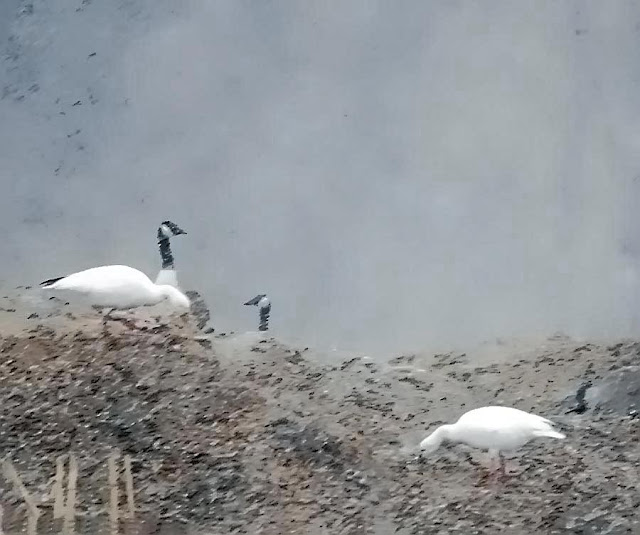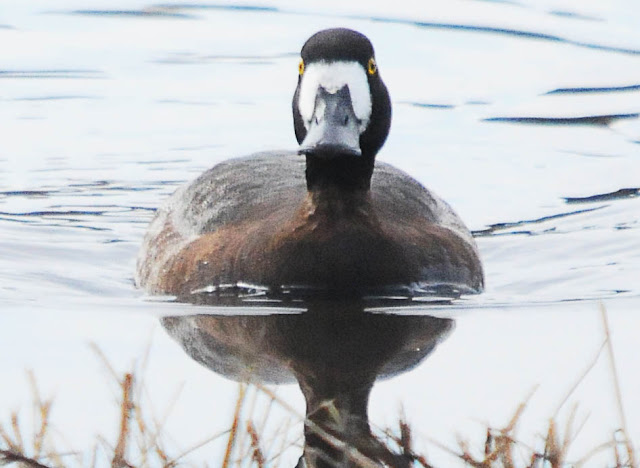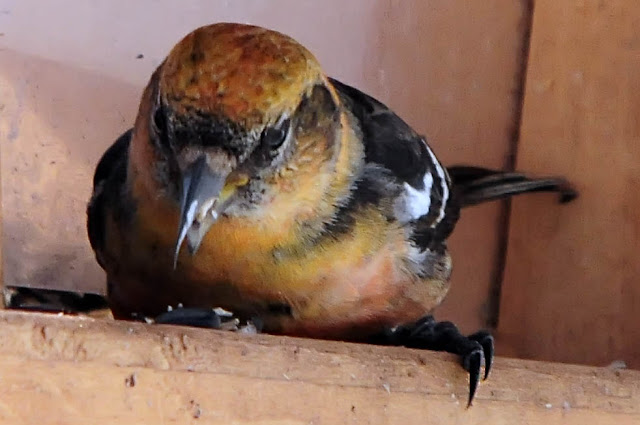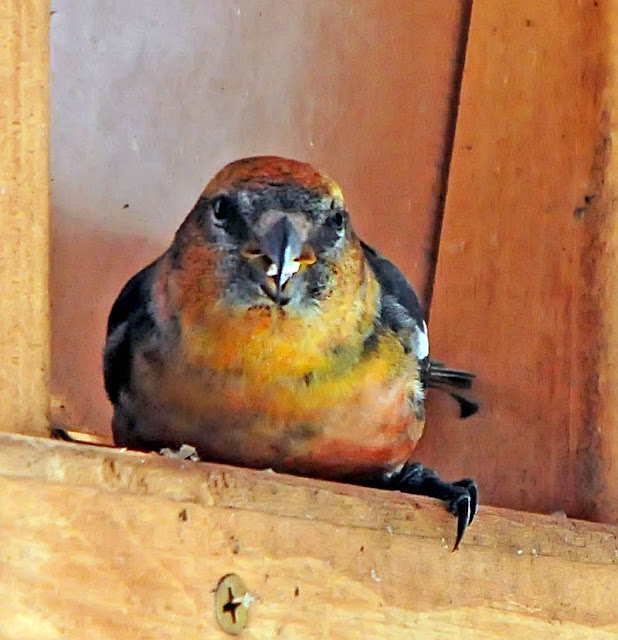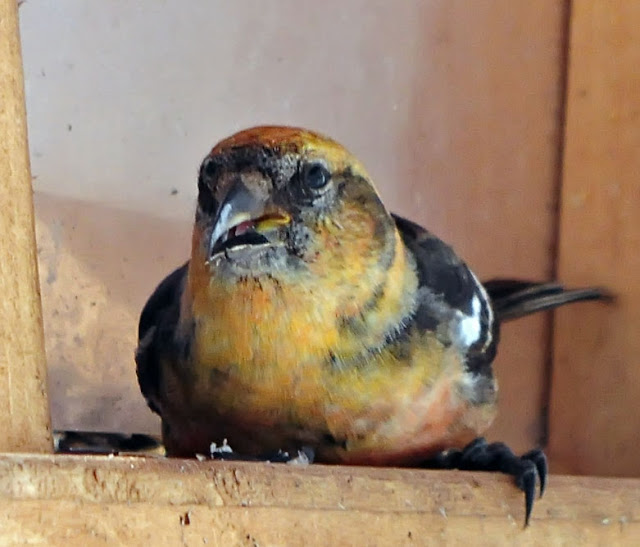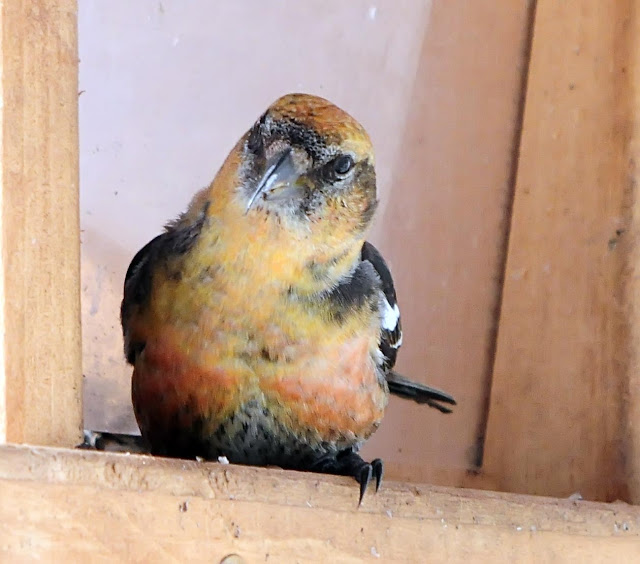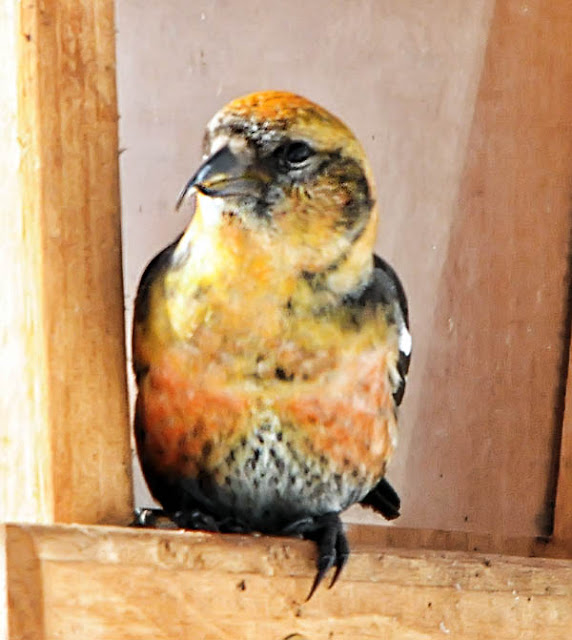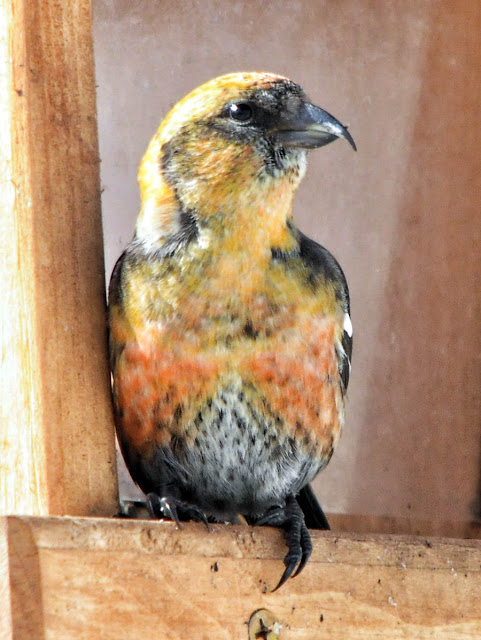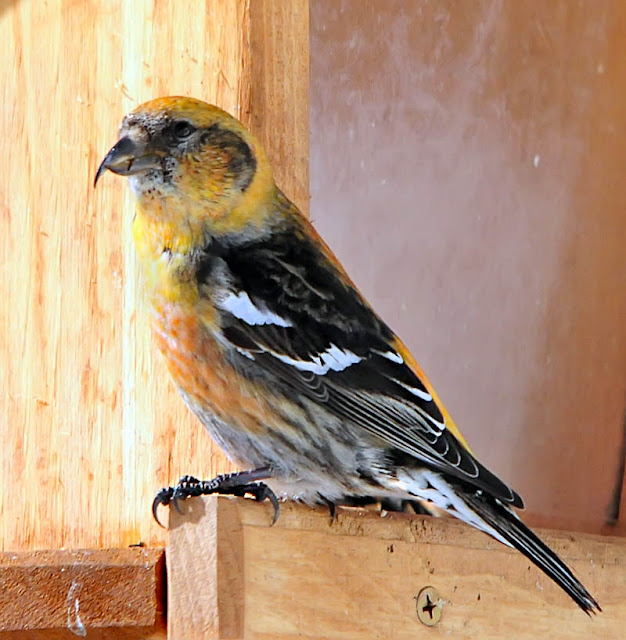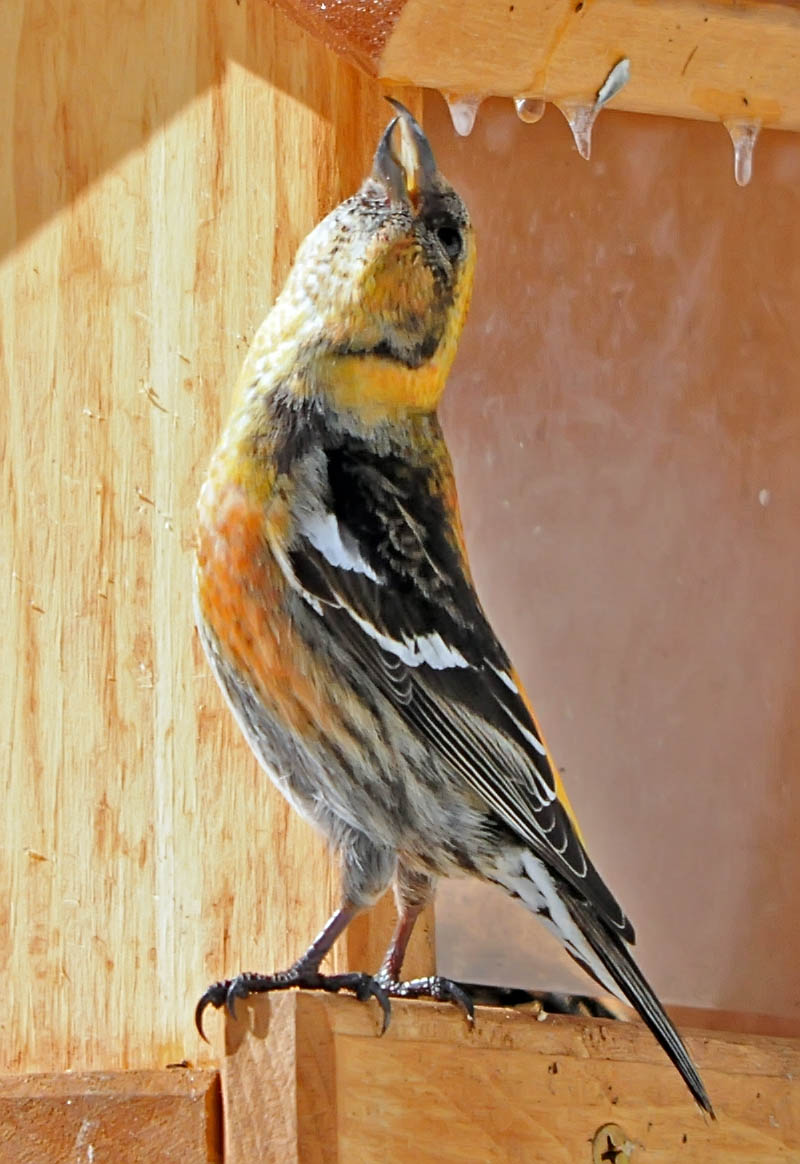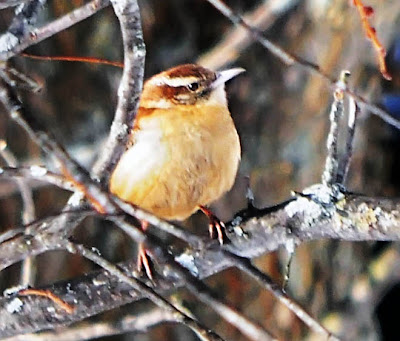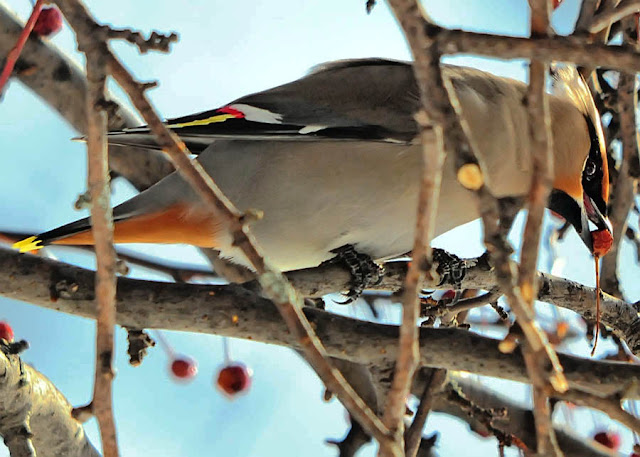White-winged Crossbills are at home in the northern boreal coniferous forest where they feed on conifer seeds. With their crossed bills they are wedging the scales of the conifer cones open, and lift the seeds out with their tongue. They are nomads traveling where ever conifer seed is in abundance, and in the winter they often appear in the northeast. A male has been reported at a feeder on the campus of Putney School for a couple of weeks but I had had no luck seeing the bird until today.
It was a brilliant morning. When I arrived on campus the trees were glittering, each twig studded with sparkling ice crystals. The White-winged Crossbill, an immature male, was hunkered down on a feeder by the campus kitchen busy with picking sun-flower seeds.
.
He started out in the shade, but gradually made his way into the sun. He also stopped feeding having apparently gotten his fill.
He had started off feeding in the shade, but was gradually working his way into the sun.
I am not sure what he was looking at under the roof but shortly after he flew off.
So I was able to add another bird to my life list, bringing the count up to 271. I'd like to thank Ken Klapper, expert birder from Keene, in locating these birds and pointing them out to me.
Thanks for stopping by. Please leave a comment.








